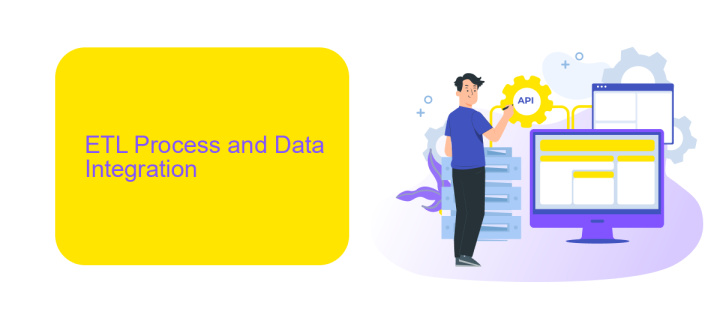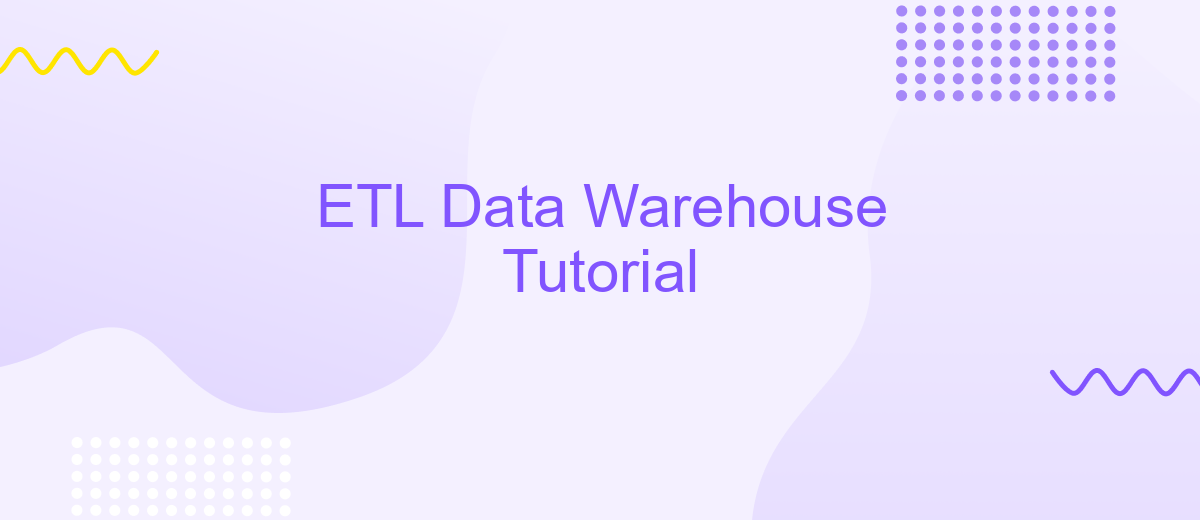ETL Data Warehouse Tutorial
Welcome to the ETL Data Warehouse Tutorial! This guide is designed to introduce you to the essentials of ETL (Extract, Transform, Load) processes and their critical role in data warehousing. Whether you're a beginner or looking to refine your skills, this tutorial will provide you with the foundational knowledge and practical insights to effectively manage and utilize data in a warehouse environment.
Introduction to ETL and Data Warehouses
ETL (Extract, Transform, Load) is a fundamental process in data warehousing that involves extracting data from various sources, transforming it into a suitable format, and loading it into a data warehouse for analysis and reporting. This process ensures that data is accurate, consistent, and available for decision-making.
- Extract: Data is collected from multiple sources such as databases, APIs, and flat files.
- Transform: The extracted data is cleaned, formatted, and transformed to meet the requirements of the target data warehouse.
- Load: The transformed data is loaded into the data warehouse, making it available for querying and analysis.
Data warehouses store large volumes of historical data and are optimized for fast query performance, enabling businesses to gain insights from their data. Tools like ApiX-Drive can simplify the ETL process by automating data extraction and integration from various sources, ensuring seamless data flow into your data warehouse.
ETL Process and Data Integration

The ETL process, which stands for Extract, Transform, Load, is a crucial component in building a data warehouse. During the extraction phase, data is collected from various sources such as databases, APIs, or flat files. This raw data often comes in different formats and structures, making it necessary to transform it into a consistent format. Transformation includes data cleaning, normalization, and enrichment to ensure that the data is accurate and useful for analysis. Finally, the transformed data is loaded into the data warehouse, where it can be accessed for reporting and analytics.
Data integration is an essential aspect of the ETL process, as it involves combining data from multiple sources to provide a unified view. Tools like ApiX-Drive facilitate this integration by offering automated workflows that connect various data sources without the need for manual coding. ApiX-Drive supports a wide range of integrations, making it easier to synchronize data across different platforms. This seamless integration ensures that the data warehouse is always updated with the latest information, enabling more accurate and timely business insights.
Data Transformation and Data Cleaning

Data transformation and data cleaning are crucial steps in the ETL process to ensure the accuracy and reliability of the data in a data warehouse. During data transformation, raw data is converted into a format that is suitable for analysis. This may involve aggregating data, normalizing values, or converting data types.
- Identify and remove duplicate records to ensure data integrity.
- Correct errors and inconsistencies in the data, such as misspellings or incorrect values.
- Standardize data formats, such as date and time formats, to ensure consistency across datasets.
- Fill in missing values using appropriate techniques, such as mean imputation or predictive modeling.
- Filter out irrelevant or redundant data that does not add value to the analysis.
Effective data transformation and cleaning can be facilitated by using integration services like ApiX-Drive. ApiX-Drive allows seamless integration of various data sources and automates the data transformation process, ensuring that the data is clean and ready for analysis. By leveraging such tools, organizations can save time and reduce the risk of errors, resulting in more reliable and insightful data analysis.
Data Warehousing Concepts and Architectures

Data warehousing is a critical component in modern data management strategies, enabling organizations to consolidate and analyze large volumes of data from various sources. A data warehouse serves as a central repository where data is stored, transformed, and made available for querying and reporting.
There are several key concepts and architectures associated with data warehousing. These include the ETL (Extract, Transform, Load) process, which is essential for moving data from source systems into the data warehouse. Additionally, data warehouses often employ a star or snowflake schema to organize data efficiently.
- ETL Process: Extracts data from multiple sources, transforms it into a suitable format, and loads it into the data warehouse.
- Star Schema: A simple database schema that uses a single fact table connected to dimension tables.
- Snowflake Schema: A more complex schema that normalizes dimension tables to reduce redundancy.
To streamline the integration of various data sources, services like ApiX-Drive can be highly beneficial. ApiX-Drive simplifies the process of connecting different applications and automating data flows, ensuring that data is consistently and accurately transferred into the data warehouse. This helps organizations maintain data integrity and improve decision-making capabilities.


ETL Tools and Best Practices
When choosing ETL tools for your data warehouse, it's crucial to consider factors such as scalability, ease of use, and integration capabilities. Popular ETL tools like Apache NiFi, Talend, and Informatica offer robust features for data extraction, transformation, and loading. These tools support various data sources and provide user-friendly interfaces for designing ETL workflows. Additionally, cloud-based ETL services like AWS Glue and Google Dataflow offer scalability and flexibility, making them suitable for handling large data volumes.
Best practices for ETL processes include maintaining data quality by implementing validation checks and error handling mechanisms. Automating ETL workflows using scheduling tools or services like ApiX-Drive can improve efficiency and reduce manual intervention. ApiX-Drive, for instance, simplifies the integration of different applications and services, ensuring seamless data flow between systems. Regularly monitoring ETL processes and performing incremental data loads can also enhance performance and minimize downtime. Finally, documenting ETL workflows and maintaining version control can aid in troubleshooting and future enhancements.
FAQ
What is ETL in the context of a Data Warehouse?
Why is ETL important for Data Warehousing?
What are the main challenges in implementing an ETL process?
How can automation tools help in the ETL process?
What are some best practices for designing an ETL process?
Apix-Drive is a universal tool that will quickly streamline any workflow, freeing you from routine and possible financial losses. Try ApiX-Drive in action and see how useful it is for you personally. In the meantime, when you are setting up connections between systems, think about where you are investing your free time, because now you will have much more of it.

